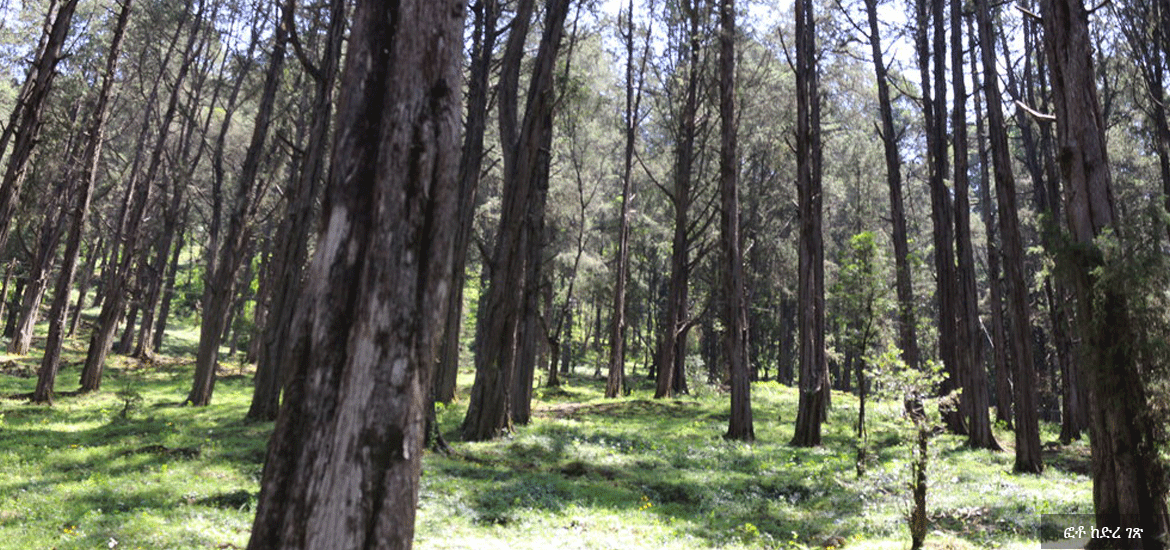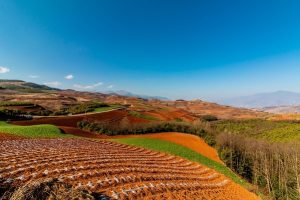
BY ABEBE WOLDEGIORGIS
Among the various threats to forests, human activity is the major one. For instance, in rural areas forests are cleared for the expansion of farm lands, for house hold fuel, construction and industrial purpose.
Moreover, the growing demand for forest products induced by urbanization aggravates the situation, says Kebede Yimam, Vice Commissioner of Environment Forest and Climate Change.
As to him, according to a recent study, in Ethiopia the annual demand for forest products has reached 124 million cubic meters and predicted the amount of the demand will rise to 158 million cubic meters by 2030.
The current forest resource does not meet even 50 percent of the demand. Because the amount of utilized forest product is equal to the annual growth of forest products and had it been more than that, it would have been totally demolished. Hence the projected demand for the year 2030 calls for more afforestation works in advance.
He further said that according to the 2016 GIZ study by cultivating 100 hectares of forest land, creating permanent jobs for 212 people could be possible. On the other hand, the study carried out with the cooperation of the US based Forest Resource Institution indicated that in the country there is 54 million hectares of barren land to be covered by forest. Based on this study, it is possible to create jobs for 114 million people nearly the total population.
Dr. Agena Anjelo, Vice Director of the Ethiopian Environment and Forest Research Institute, on his part says there is 54 million hectares of land that should be afforested urgently. There is also additional 54 million hectare which has a potential to be covered by forest phase by phase.
Currently, the world expects Ethiopia to play crucial role in mitigating climate change through carbon sequestration by expanding afforestation. The advanced countries have shown interest to support Ethiopia in this regard.
There is vast land to be covered by forest and unless the afforestation takes place through green movement the task is difficult.
For this purpose, replicating other countries such as Korea is essential. Before the country transformed its economy, it lost most of its
alpine vegetation during the Korea-Japan war. After the end of the war the forest lands were recovered through massive afforestation movement which consequently turned even the sloppy mountains to green. The rocky areas were cultivated through covering the place by soil coming from other parts. Currently, Korea has no open area which is not covered by forest.
As to Agena, forest is an asset which could serve as means of gaining hard currency through carbon trading. It also creates conducive living areas locally. In the last two decades much work has been done in afforestation. Within the two GTP efforts also encouraging results were gained.
However, there are still many factors which aggravate deforestation and among others the majority poor which used forest cutting as means of living can be mentioned. Instructing this segment of the society not to cut forest without showing other means of living is unrealistic.
Still the forest clearance has continued in the both sides of the Abbay River banks it is a means of survival. To tackle the problem creating job in planting trees can be taken as a way out.
Through planting trees that can be harvested in short period of time and in the long years can bring solutions step by step and creating jobs to the youth also possible.
According to the institutes recent assessment, there is 2.5 million hectares of land cultivated by forest. But to conclude whether the trees have become forest or not needs at least three to five years of care and protection.
Within 10 years the trees would be due to be forest because their height would most likely grow longer than 2 meters. The rate of planting trees should go in line with the rate of cultivation. But most of the time there is mismatch. Hence increasing the rate of cultivation is essential.
Through mobilizing the youth enhancing the current amount of forest coverage which is 15.5 percent to 40 and 50 percent within a decade could be possible because vast barren lands must be covered by forests.
Kebede on his part said that, in some parts of the country a culture of cultivating forest and supplying the products to the market is developed. Similar to the sedentary farmer and pastorals group of society earn its living through cultivating forest is created.
Vast forest land exists in Oromia region and significant number of the population relies on the forest for means of survival. In Southern Ethiopia in Gedeo area the coffee growing people know the value of forest, coffee plantation sheltered under longer forests and protected from heavy sunlight.
People draw lesson from experience and live in small plots of land without harming the forests and they consider forest as a source of their means of survival.
In other regions, there are people who earn their living by harvesting gum and exporting constructional wood to the Sudan and this indicates that people awareness with regard to forest economic value is rising.
The Ethiopian herald December 27/2020





